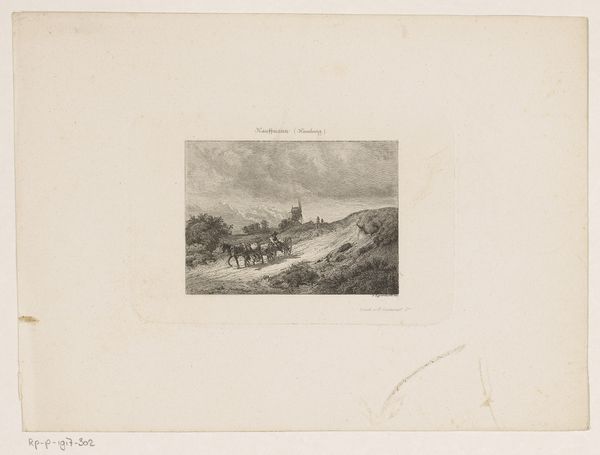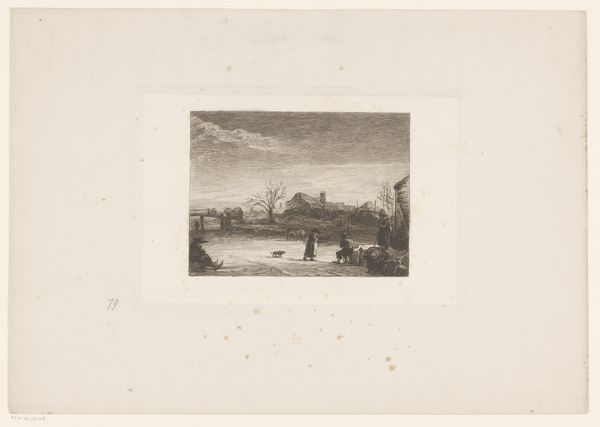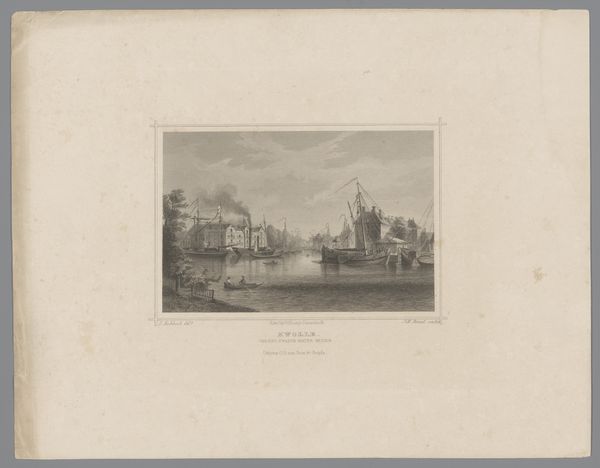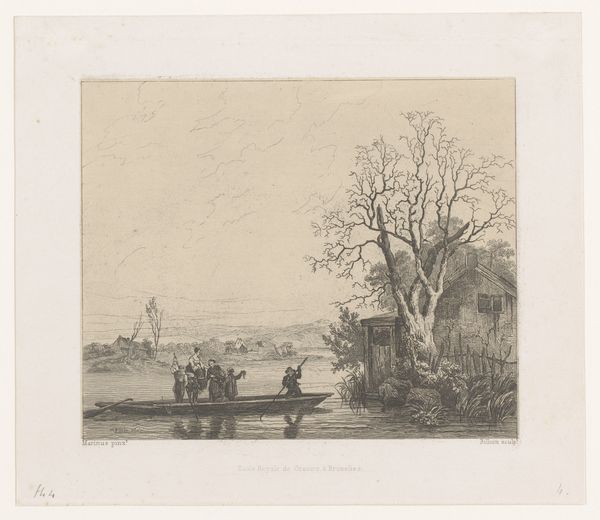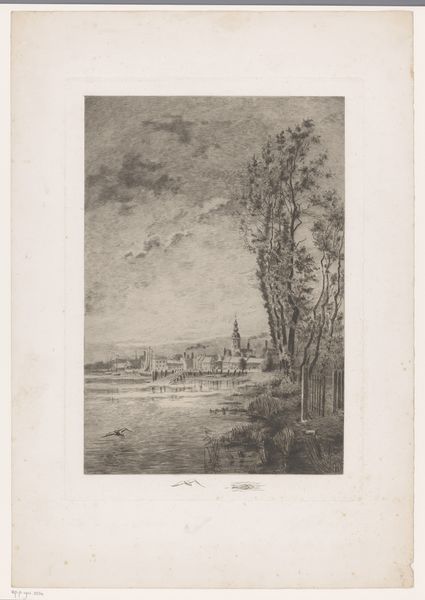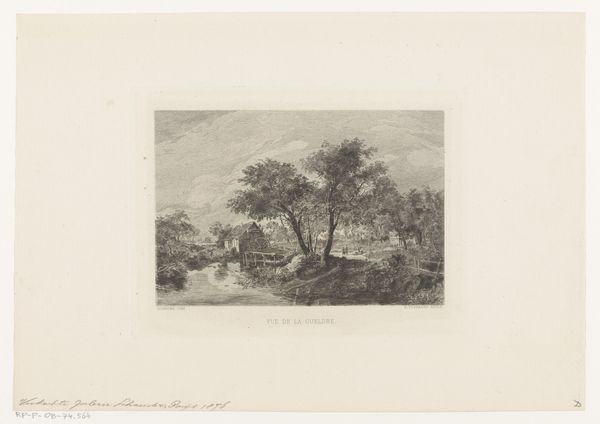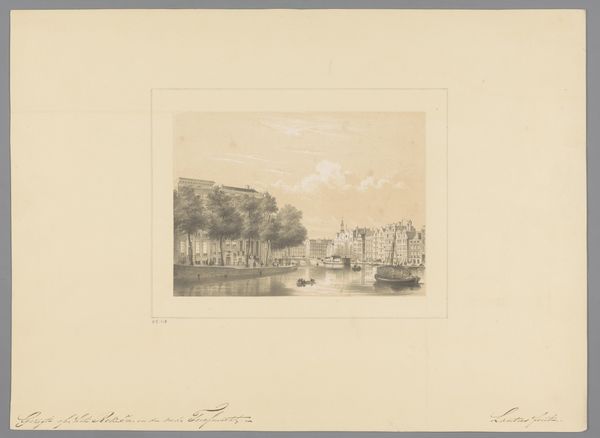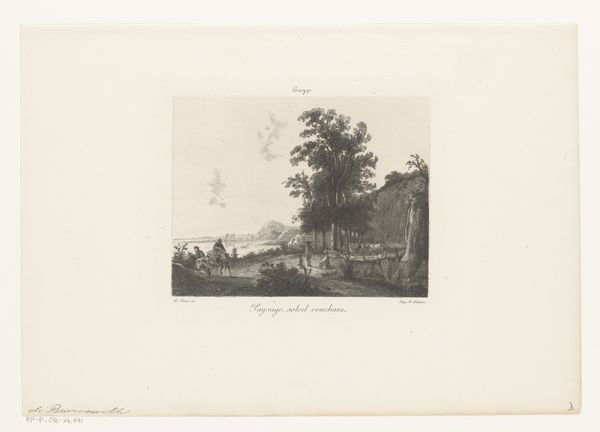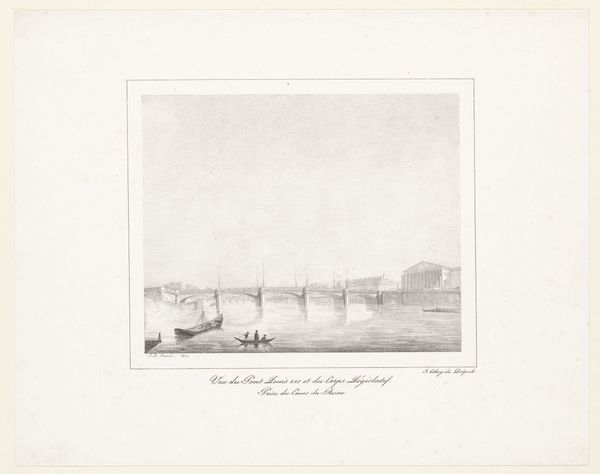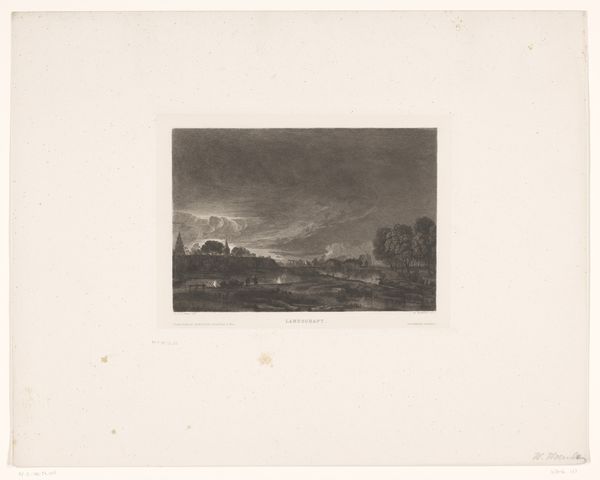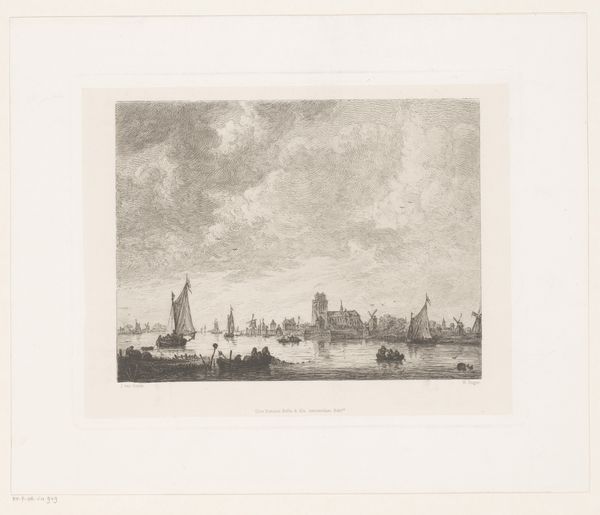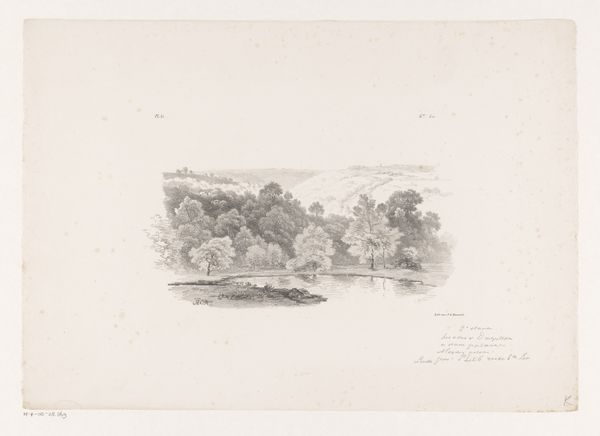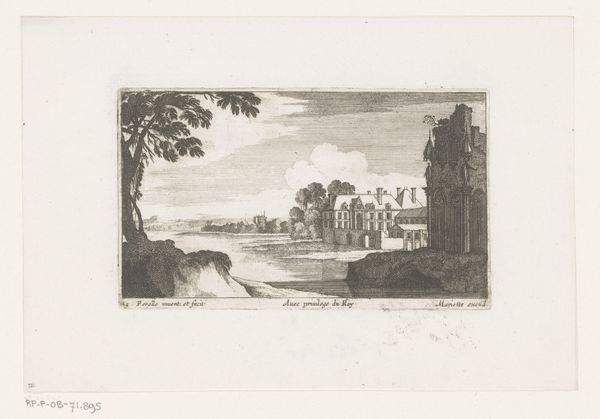
print, etching
#
dutch-golden-age
# print
#
etching
#
landscape
#
realism
Dimensions: height 158 mm, width 227 mm
Copyright: Rijks Museum: Open Domain
Curator: Before us we have Philip Zilcken's etching, "Landschap met boerderij, vaart en brug," placing us somewhere between 1890 and 1930. A bucolic scene, no? Editor: It is, yes. A rather somber piece. The limited tonal range lends the whole scene a quiet, contemplative air. Look at how the dark clouds mirror the reflections in the still canal. Curator: Precisely. And those clouds are key. Consider the social context: the late 19th century in Europe was marked by urbanization, industrial booms, and mass rural exodus. This etching harkens back to an older, agrarian world, one far removed from the factory floor and consumer culture. Notice the farmhouse dominating the view. Editor: Dominated perhaps, but in an understated way. The etching technique itself, with its delicate lines, contributes to this subtle expression. And notice the bridge; the horizon line is bisected and framed by that geometry. What visual interest! Curator: Speaking of technique, let's think about etching itself as a process. It allowed for multiple reproductions, meaning this idealized vision of rural life could be distributed widely, consumed like any other commodity by the urban populations craving such images of unspoiled nature. There is a clear tension. Editor: Good point. While Zilcken does indeed embrace a specific representational style aligning with the aesthetics of Realism, what elevates this above simple representation is the conscious interplay of form and shadow and, as I said before, geometry that articulates that composition. It transcends mere depiction. Curator: And that 'transcendence' speaks directly to the societal longings embedded in it, wouldn't you say? Etchings democratized art production, putting these landscape fantasies into everyday life... on postcards, in affordable books. It’s all about making this view accessible, replicable and—let's face it—consumable for an increasingly industrialized public. Editor: It's a confluence of formal harmony and, now that you put it like that, complex sociopolitical undertones. I initially saw tranquility, but perhaps there is something subtly melancholic there as well. Curator: Exactly! And perhaps we, too, in our consumption of art, participate in a long and enduring history of similar societal longings.
Comments
No comments
Be the first to comment and join the conversation on the ultimate creative platform.
